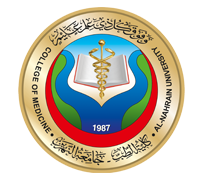|
Vol. 17 Issue 2 April - June / 2019
Published on website | Date : 2019-10-24 10:38:17
9.The Effects of Gender and Hand Dominancy on Motor Unit Number Estimation in A Sample of Healthy Iraqis Using Two Different MethodsSafa Dh. Abdul Muneem, Hussein G. KaddoriAbstractBackground:Motor unit number estimation (MUNE) is a unique electrophysiological technique that was developed to determine a numeric estimate of the number of innervating axons. This technique can be used to determine the approximate number of motor neurons in a muscle or group of muscles.
Objective:To test the MUNE values according to subject’s gender and hand dominancy in the normal population. Methods:Healthy volunteers who had neither neuromuscular nor systemic/ metabolic disease, with normal neurological examination were studied. Ninety hands of 56 healthy volunteers (11 males and 45 females) with ages ranging from (24-58) years were included in the study. All had normal median nerve conduction studies. Manual incremental (INC) method and adapted multiple points stimulation (AMPS) method were performed for MUNE. Results:Gender did not have an effect on the scores according to the two studied methods (p=0.054 by INC method and p= 0.700 by AMPS method). Hand dominancy also show no statistically significant difference of the scores of MUNE according to both studied methods (p=0.091) by INC method and (p=0.051) by AMPS method. Conclusion:Incremental stimulation and adapted multiple point stimulation are reliable and easily applicable methods with same reproducibility in estimating motor units with no significant effect for subject gender or hand dominancy. Keywords:Motor unit, motor unit number estimation (MUNE), incremental stimulation (INC) method, adapted multiple point stimulation (AMPS) method Citation:Abdul Muneem SD, Kaddori HG. The effects of gender and hand dominancy on motor unit number estimation in a sample of healthy Iraqis using two different methods. Iraqi JMS. 2019; 17(2): 153-160. doi: 10.22578/IJMS.17.2.9 Full-text |
Some tools below are only available to our subscribers or users with an online account |
 |
Please wait until the current process completes ... |



